Every Command & Conquer game, ranked from worst to best
Command & Conquer's many thematic twists and turns make it one of the most varied strategy series on PC.
Command and Conquer: Tiberian Sun (1999)
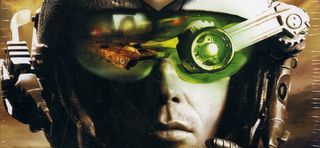
Buckle up, here’s where things start getting divisive. Depending on who you ask, Tiberian Sun is either a great sequel or a horrible disappointment in C&C history. It’s not hard to see why—representing a complete shift in tone and setting, and with markedly different gameplay, TS was a very different experience to the C&Cs before it.
Gone were the bright greens of sunny grassland maps, the fast-paced soundtrack and the simple, modern military units; instead, the game took place in a dark, desolate wasteland, haunting melodies scoring its battles between futuristic factions. Gone were the simple pleasures of basic riflemen and medium tanks carrying the day; Tiberian Sun featured sonic disruptors and flame-spewing tanks that burrowed through the ground, stomping bipedal mechs and unsettling cyborg commandos that kept chasing you even when you blew their legs off. TS’s style was very distinct, and if you didn’t like it, you probably weren’t going to like the gameplay much either. That the game was rushed out the door by Westwood’s new publisher EA and was somewhat unpolished as a result didn’t help.
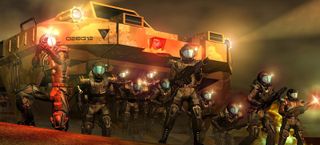
For all its gloom, Tiberian Sun was an excellent addition to the series. The engine looked fantastic for the time, and the blend of sprite-based infantry with voxel-based vehicles made for a memorable graphics style. Terrain deformed from explosions, pockmarking the map as you battled over it. Its satisfying selection of futuristic soldiers and vehicles balanced against each other well to allow a variety of tactics throughout its campaign and its multiplayer. Frank Klepacki did an excellent job scoring all of the classic C&Cs, and Tiberian Sun is no exception, with a moody techno soundtrack thatperfectly communicated “the world is a Tiberium-infested hellscape, enjoy fighting to the death over it.” Listen to this track from TS, Valves— it sums up the combination of gloom, mystery, and ceaseless combat that Tiberian Sun’s world was about.
I spent many happy hours in that dreadful world, gunning down Nod and mutants alike and compulsively concrete-proofing my bases to stop Devil’s Tongue attacks. TS was a unique game, and the chirp of its rifles and subdued burst of its explosions have been etched into my mind since I first played it. But no matter how much I enjoyed it, I still consider TS as being stuck awkwardly in the middle of the C&C family—created too late to be part of the tried and true style of the early games, and created too soon to be more than a rough foundation for the greatness that was yet to come.
Command and Conquer (1995)
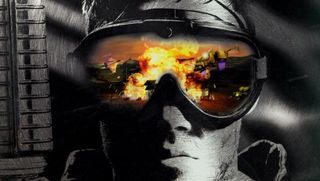
The chatter of minigunners firing. The throaty roar of advanced guard towers launching missiles. The hiss of flame tanks spraying. The foreboding, sinister hum as the obelisk of light charged up, before an angry pulse of light screamed out over the battlefield. Thinking about the original C&C conjures up these sights and sounds in my head, and then as if it were yesterday, I’m back on GDI mission 1 for the first time, securing a beachhead via hovercraft insertion under the cover of gunboat fire.
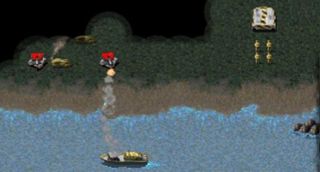
I know I’m not alone. Westwood may have set the stage with Dune 2, but it was Command and Conquer that truly resonated with PC gamers. The game was simple enough to learn—construct a base, harvest resources, build an army, and attack the enemy—but its variety of different units across its two different factions lent it great replayability and depth, its familiar modern military theme made understanding those units intuitive, and its excellent, fast paced soundtrack from Frank Klepacki coupled well with its quick, action-packed gameplay. C&C’s multiplayer took the game to even greater popularity with local and online matches against human opponents; each game box shipped with two CDs, allowing you and a friend to play against each other with just one purchase.
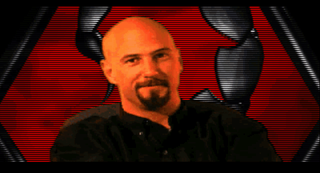
Command and Conquer also featured full motion video cutscenes, starting a tradition that persisted through every sequel except for Generals. Joe Kuncan’s performance as Nod’s charismatic leader Kane is wonderful, and together with Eric Martin as the GDI’s straight-laced Brigadier General Sheppard, these cutscenes go far to set the tone and immerse you in the story of each side’s campaign. While every C&C since tried to go bigger with its stories, I’m still a sucker for the simple, understated briefings and interludes of Command and Conquer’s cutscenes. Is that camera still running?!
The biggest gaming news, reviews and hardware deals
Keep up to date with the most important stories and the best deals, as picked by the PC Gamer team.
Command and Conquer: Red Alert (1996)
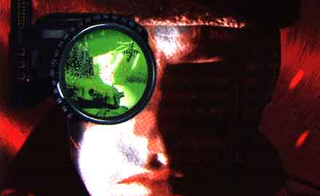
It’s 1996, and Hell March is blaring through your speakers. Hitler has been handshaken from existence, and Stalin’s testing nerve gas on a local village. Machineguns chatter as your aircraft strafe desperate partisans. A fuel barrel gets hit and the whole place goes up in a fireball, guerillas running around on fire as your infantry level the town. There’s some crates of money underneath the church to buy more planes with.
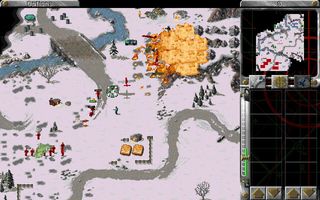
Red Alert refined Command and Conquer's blueprint for a fantastic RTS. It featured the same gameplay but with a huge number of new units and buildings, set in a more interesting alternate history cold war where Hitler never took power and World War II was fought against Stalin and Soviet Russia instead. Tesla Coils and Chronospheres set the tone of this new, weird-science world, and the expanded variety in units and buildings made Red Alert’s gameplay even better than its predecessor. It applied that extra depth and polish that made C&C’s classic gameplay into something that stands the test of time—even today, Red Alert’s combination of infantry, vehicles and defenses make for challenging and satisfying battles, which is why many fans still play the game against each other online through the open source remake OpenRA.
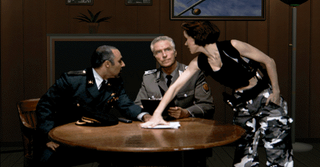
Red Alert didn’t just provide more toys to play with—it iterated on existing gameplay systems and brought in new ones, such as introducing a second, rarer resource that provided higher cashflow, unique hero units like Tanya, and naval combat that supported the main land forces. It also included a map editor for players to create their own multiplayer battlefields.
Hitler has been handshaken from existence.
Red Alert featured a campaign for each faction with a full complement of FMV cutscenes, just like its predecessor, and again they do a wonderful job of setting the tone. Whether you’re being intimidated in Stalin’s boardroom or brought up to speed by the Allies' no-nonsense generals, the briefings invested you in Red Alert’s world, and in a campaign where your commanding officers become more and more dependent on you as you gradually become their Top Man. I love the Soviet mission where you have to hunt a spy down with attack dogs and troops, leaving a path of destruction through villages as you left him nowhere to hide. Other missions required you to sabotage bridges, make amphibious landings, or save Einstein. But the most memorable Red Alert campaign for me has to be the one Westwood added in it’s expansion, Counterstrike.
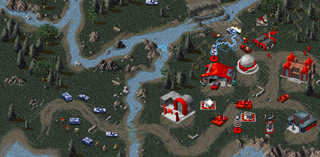
In the first Command and Conquer, you could access a secret ‘funpark’ campaign, where you fought against rampaging dinosaurs. Red Alert took that idea and, again, refined it, presenting players with It Came From Red Alert!, a secret campaign against giant, flame-breathing ants accessed by shift-clicking the top right speaker on Red Alert’s main menu. Fun, creative, and tough as nails, these missions were a real challenge, and a memorable blast to play through.
Red Alert did a phenomenal job of taking C&C’s magic and raising it to new heights, and for that, there’s few games I remember as fondly. But things were only just getting started, and as Westwood continued to create, the best was still yet to come.
Command and Conquer: Generals (2003)

Chinooks full of troops spraying rockets and flashbangs at hordes of Chinese nuke-tanks as middle eastern extremists ride in with Toyotas, motorcycles, and trucks full of explosives. Often regarded as the black sheep of the C&C family, Generals was thematically a straight-faced parody of a modern world in conflict, a three-way free-for-all where the US and China vie for control of the world while the Global Liberation Army slams bomb-trucks into anyone who looks at them funny. A world where an American tank defeats an anthrax-armed tractor and then stoically states “It’s the right thing to do.” Where despite all the heavily armed tanks, high-tech lasers and elite infantry, an angry mob armed with AK-47s is one of the scariest forces on the battlefield. Despite being based on our modern day world, Generals may rival Red Alert 2 for the most absurd C&C game ever.
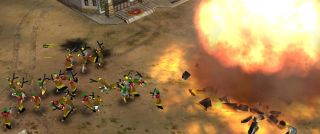
It also rivals RA2 for being the best C&C game ever. When Generals first appeared, fans naysayed its many changes. They pointed to the removal of resource fields for a new supply dump based economy, to the abandonment of the Tiberium and Red Alert worlds for a more realistic one, to the lack of FMV cutscenes and the new 3D engine, all as to signs it wouldn’t be a good C&C game. I said it then and I will say it to my grave—they were wrong.
This is a game where 'F-22 harass' and 'Toxin tractor rush' are equally viable.
While Generals deviated from everything previous, it stands on its own as a fantastic RTS experience. The intricacies that made later Westwood C&Cs so good are all here—infantry, vehicles and static defenses all interact in a satisfying way that makes for a balanced environment where every option is viable, and more importantly, enjoyable. Basic tank rush? Works like it always did. Combined arms siege crawl supported by artillery and point defense? Slow, but hits like hell. Heliborne infantry drops to secure key map points? Fancy, and effective.
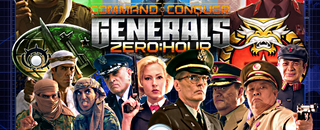
This is a game where 'F-22 harass' and 'Toxin tractor rush' are equally viable, where if you play your cards right, you can use whatever units you want. I spent thousands of hours playing Generals, and I used every unit and faction in the game extensively. Each had its own interesting application to the battlefield, each was well-themed (and well voice-acted), and each was satisfying to command. New additions like a faction-based talent tree, unit upgrades, and some secondary abilities all added to the game’s depth without becoming overwhelming. Generals’ campaign was much more forgettable than any previous C&C entries, but its multiplayer and skirmish were second to none—whether battling the AI or other players, it felt infinitely replayable, an RTS where you were limited only by your personal skill and how intricately you knew your units. And there were a lot of units to know.
Yet more was added in Zero Hour, Generals’ expansion pack that provided new units, campaign missions, and an in-depth challenge mode. Players would pick one of nine newly introduced generals who emphasized various powers—US Air Force, Chinese Infantry, GLA Toxins, and so on—and then fight against the other eight leaders one-by-one on their respective home turfs, each a unique map that played to their specific strengths. Each was a tough fight, and after beating all eight generals on your run, you fought a final boss who used tech from all three factions at once.
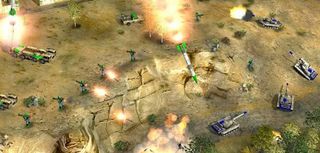
It was fun and difficult, and greatly replayable—beating the challenge with one general felt entirely different to doing it with a different one. These generals were all available to use in the game’s multiplayer as well, and the specializations and improved units they brought to the table further enhanced Generals’ depth and gameplay. Zero Hour complemented Generals’ wonderfully, assuring its place as one of the best expansion packs ever made, for one of the greatest RTS games of all time.
Command and Conquer: Red Alert 2 (2001)
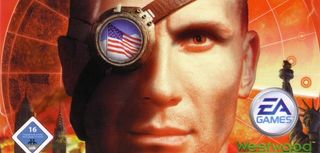
Is it done, Yuri? No, Comrade Premier. It has only begun. Red Alert 2 is, without a doubt, the height of Command and Conquer. It takes everything great about the series and refines it to near perfection. RA2's units interact with each other brilliantly, each excelling in one area while being beaten out in another, at once being both distinct and yet wonderfully balanced against each other. Its wide range of maps are bright and interesting, filled with various buildings you can garrison with infantry or capture to gain special benefits as well as plenty of chokes, bridges and water.
Its campaign is excellent, and its cutscenes are fantastic—a just-right level of ham that enjoys its own campiness but stops before going over the top. While all the characters are great, Udo Kier is the standout as Yuri, the psychic advisor to Soviet Premier Romanov who is equal parts intimidating and entrancing. Even against Joe Kuncan’s Kane, it’s Yuri who takes my spot for C&C’s best antagonist; while he may not exude the natural charisma of his Nod counterpart, the psychic Soviet absolutely radiates with sinister power. I feel under his control just by looking at him.

Speaking of Yuri, RA2’s fantastic expansion revolves around him in the aptly titled Yuri’s Revenge, where the game doesn’t just receive new units but an entirely new faction just for Yuri himself. RA2 is a great base game, but Yuri’s Revenge is its perfection, introducing an entirely new psychic-based army full of unique units and keeping them all balanced to boot. It also introduces a new campaign which tasks you to save Microsoft from Soviet destruction, fight off dinosaurs in a time travel mishap, and command a cosmonaut assault on Yuri’s moon base.
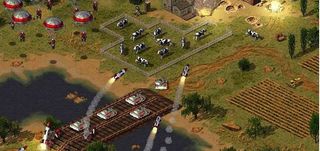
Both RA2 and its expansion are scored with peak Klepacki, bringing a brilliant, fast-paced techno-funk soundtrack that I’ll have stuck in my head as long as I live. Layered atop that score are the best unit voices in the series. Until this point Westwood had stayed mostly clean-cut with its military voiceovers, but RA2 embraced the themes of its units, giving each a distinct personality emphasized by memorable dialogue.
Alright, the water's warm!
—SEAL unit
"I’ll take the high road!” croons the Allied Rocketeer as he sails across the sky. “We will bury them” growls the Soviet Rhino Tank as it cruises towards a fight. “A little C4, knocking at your door” remarks the SEAL. “Kirov reporting” announces the unstoppable airship of destruction across the entire map, as you panickedly construct air defenses and pray for divine mercy. RA2’s units forever lodged themselves in my brain, so badly that I idly spout their lines in everyday conversation whenever certain triggers are met. If you ever tell me “I’ve got the knowledge!” I will immediately shout “STUDYING BLUEPRINTS” back at you in a nasal voice. It’s an affliction I will never be free from.
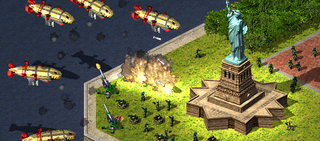
But what really makes RA2 the greatest C&C is the design of its armies. Each faction has a huge variety of units, and even more interesting interactions between them. A great example is the Allied IFV, a fast moving buggy that gains a completely new weapon system for each type of infantry you put inside it. Tesla Troopers pull double duty as chargers for the iconic Tesla Coil defense, souping up its range and damage. Prism Tanks link up with each other to provide a more powerful, networked attack. Crazy Ivans can apply time bombs to any unit they touch, even allied units, allowing you to create improvised suicide bombers—but why stop there when you can use Yuri to mind control local wildlife like cows and have them deliver the bombs instead? Mirage Tanks pretend to be trees, Floating Discs abduct your cash, Terror Drones tear vehicles apart from the inside and Chrono Legionnaires erase you from existence—RA2’s unit variety is exceptional, and each of those units is a blast to use in its own right.
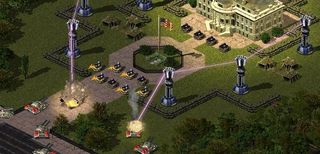
Its IFVs and Spies that really sum up how much care went into RA2’s excellent design. As mentioned, the Allied IFV changes its weapon based on what infantry hops inside it—but rather than just apply this to only Allied infantry, Westwood configured unique bonuses for every infantry unit in the game, including Soviet and Yuri ones. Never mind that to even put one of these infantry inside an IFV, you’d have to be in the rare position of capturing an enemy Construction Yard with an engineer in order to use their technology; the IFV can be configured to shoot lightning from its turret by an onboard Tesla Trooper, garrisoned with a Yuri for a psychic blast, or take a Crazy Ivan onboard so it can just… well, blow up. Hopefully on top of some enemies.
The Allied Spy was designed with similar rare combos in mind, allowing him to steal different secret units to create based on which faction his player is and which faction’s Tech Center he’s infiltrating—Soviet players who stole their way to getting Spies could gain a Yuri Prime by then invading another Soviet Tech Center; meanwhile, Allied players who infiltrated another Allied player’s Tech Center could gain the Chrono Commando, a teleporting MP5-wielding SEAL who insta-killed buildings with an endless supply of C4. Yes, he was exactly as terrifying as he sounds.
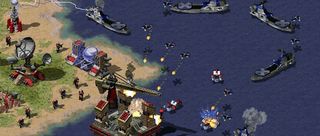
Various other features round out RA2’s excellent gameplay, including the aforementioned ability to garrison infantry in buildings, introducing a larger variety of interesting superweapons, providing an entire set of different Allied and Soviet sub-nations to pick that gave you unique units and powers, and expanding upon Tiberian Sun’s veterancy bonuses (if you ever see a three-stripe Prism Tank, just run). The resulting game is a triumph in its genre, and stands as one of the greatest games of all time. The loss of Westwood Studios was a tragedy for gaming, but their passionate, inspired work will live forever in the games they created—and Red Alert 2 is, without a doubt, the best among them.

If you love big trucks, establishing trade routes, and the phrase 'post-apocalyptic survival business simulator' then I've got just the strategy RPG for you

Blizzard veteran David Kim's strategy comeback with Battle Aces is 'very personal:' 'I just can't accept... the end-all peak of RTS is StarCraft 2 and nothing can ever be better'
Most Popular


